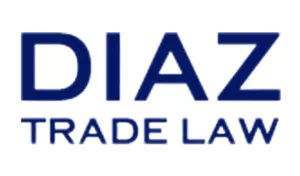All parties involved in the importation of merchandise into the US, such as importers, customs brokers, exporters, shippers, and foreign suppliers and manufacturers, can file a Prior Disclosure (PD) with Customs and Border Protection (CBP) to proactively disclose certain false statements, acts, or omissions in violation of 19 U.S.C. § 1592. By doing so, these parties may benefit from reduced penalties as a result of the PD filing. However, if CBP, Immigration and Customs Enforcement (ICE), or Homeland Security Investigations (HSI) first discovers the violation and notifies the party, the party no longer has a right to file a PD.
This article provides the background of CBP PDs, explains CBP's new extension requirements, and identifies best practices to optimize your PD filing process.
Enforcement Background
CBP is an agency of the Department of Homeland Security that is responsible for protecting the American people, safeguarding US borders, and enhancing economic prosperity. Among many objectives, CBP's mission priorities are to facilitate lawful trade, safeguard US interests by preventing unlawful trade, and protect revenue.
CBP is chiefly responsible for enforcing 19 U.S.C. § 1592, a statute under which CBP can assess monetary penalties against persons who make material false statements, acts, or omissions in connection with their importations. These material false statements, acts, or omissions must result from the parties' negligence, gross negligence, or fraudulent conduct.
"Person" includes importers, exporters, agents, manufacturers, and consignors. Aiding or abetting any person committing such act or making such an omission is a violation of the CBP statute. The statute 19 U.S.C. § 1592 gives CBP the ability to assess penalties upon persons that do not provide accurate information pertaining to their imports.
Common examples of false statements, acts, or omissions pertaining to imports include:
- Under or over valuation
- Misdescription of merchandise
- Misclassification under the Harmonized Tariff Schedule of the United States (HTSUS)
- Evasion of an antidumping or countervailing (AD/CVD) duty order
- Improper country of origin markings
- Improper claims for preferential treatment under a free trade agreement or other duty preference program
Duty to Exercise Reasonable Care
Congress implemented the Customs Modernization Act (Mod Act) which became effective on Dec. 8, 1993, and created a fundamental shift in appraisement and enforcement of CBP laws. The Mod Act unilaterally altered the relationship between importers and CBP. Its provisions shifted the legal responsibility for declaring the value, classification, and rate of duty applicable to entered merchandise to the importer. The Mod Act provided two new concepts: "shared responsibility" and "informed compliance" between importers and CBP.
Under the Mod Act, importers are required to exercise "reasonable care." This standard of care requires importers to conduct themselves as a reasonable importer would under the circumstance with respect to importing prior to entering goods into the US.
Importers have a duty to exercise reasonable care when making entry, including when:
- Classifying and determining the value of imported goods
- Providing other information necessary to aid CBP in properly assessing duties, collecting accurate statistics; and determining whether other applicable legal requirements have been met.
Practice Tip: Reasonable care can sound like a subjective standard, but the best way for importers to ensure they meet this standard, is to proactively:
- Keep records to show your use of reasonable care. Review CBP's reasonable care checklist and create written processes and procedures describing your internal implementation.
- Confirm use of the correct HTSUS classification. The HTSUS is the legally recognized mechanism for determining tariff classifications for goods being imported into the US. If you are unsure how your product is classified, review Tariff Classification Basics.
- Confirm use of the correct value for your product. When importing, accurately valuing your product and ensuring the payment of the correct corresponding duties is an important aspect of exercising reasonable care. Protecting revenue is a priority trade initiative for CBP. CBP's Informed Compliance publication on Customs Value is a terrific primer on valuation, and in contrast the premier substantive guidance including all relevant binding rulings on valuation is CBP's Valuation Encyclopedia.
- Confirm use of the correct country of origin (COO). If you are unsure of CBP's COO requirements, CBP's Guidance Marking of Country of Origin on U.S. Imports is a terrific start. When you source products from multiple countries and are unsure about whether your product is substantially transformed in the last country of production, or unsure of which COO to mark your goods with, it is best to consult with counsel and jointly determine if a binding ruling from CBP is good idea.
Prior Disclosure Process
CBP encourages proactive import compliance, including the submission of PDs by parties who believe they may have violated 19 U.S.C. § 1592. According to CBP, "Both CBP and the importing/exporting community have a shared responsibility to maximize compliance with laws and regulations." Details on CBP's PD program are available in CBP's Informed Compliance Publication on Prior Disclosures.
If a company or individual suspects it has violated 19 U.S.C. § 1592, the party must proactively inform CBP to benefit from mitigated penalties offered by a PD. Delaying submission of a PD could result in CBP notifying you that it is commencing a formal investigation, thereby preventing you from filing a PD.
Practice Tip: Although oral disclosures are permissible, CBP's regulations at 19 C.F.R. 162.74 requires that oral disclosures must be followed-up with a written submission within 10 days. If you do decide to inform CBP orally first, it is recommended to keep a great paper trail of who you spoke with, what you advised CBP, and thereafter, ensure you summarize this in writing within 10 days of your discussion.
Practice Tip: The PD must be filed with both the Fines, Penalties and Forfeiture (FP&F office) in the ports where the disclosed violation occurred, as well as the appropriate Center of Excellence and Expertise (CEE). If your PD involves multiple ports of entry, copy the relevant FP&F Officer at the primary port of entry-the port with the most entries implicated in the PD). The FP&F Officer is generally responsible to:
- Determine whether a PD is valid
- Process the PD in coordination with the assigned CEE
- Determine what penalty amount, if any, should be issued
- Close out the PD
Centers of Excellence & Expertise
CEEs are facilities established via CBP's 21st-century modernization framework. CEEs were established to increase uniformity across ports of entry, facilitate timely resolution of trade compliance issues, and strengthen critical agency knowledge on industry practices. Currently, there are 10 CEEs, each representing a distinct industry category.
The 10 CEEsorganized by industry category are:
- Electronics (Los Angeles, CA)
- Apparel, footwear, and textiles (San Francisco, California)
- Machinery (Laredo, Texas)
- Petroleum, natural gas, and minerals (Houston, Texas)
- Agriculture and prepared products (Miami, Florida)
- Consumer products and mass merchandising (Atlanta, Georgia)
- Pharmaceuticals, health, and chemicals (New York, New York)
- Automotive and aerospace (Detroit, Michigan)
- Base metals (Chicago, Illinois)
- Industrial and manufacturing materials (Buffalo, New York)
Practice Tip: Prior to filing a PD, confirm the CEE that the importer is assigned to. For more information on CEEs and a description on each of the CEEs along with a directory, click here.
Practice Tip: The most critical part of the PD process is ensuring all required components are included. If a PD is deficient, it can be rejected and thereafter used against you. A detailed checklist from CBP's Informed Compliance Publication on Prior Disclosures (Appendix A)is summarized below:
- Is your PD addressed to the Commissioner of CBP and does your submission indicate your name, address and telephone number?
- Have you identified the class or kind of merchandise involved in the disclosed violation?
- Have you identified the importations by customs entry number, or by indicating each concerned CBP port of entry and the approximate dates of entry?
- Have you provided the specific material false statements, omissions or acts involved in the disclosed violation and how and when they occurred?
- Have you provided the true and accurate information or data which should have been provided in the entry?
- If you used a statistical sampling methodology to calculate the loss of duty, have you described that methodology, including the elements of the sampling plan?
- Have you calculated any loss of duty involving liquidated entries covered by the PD? If so, have you prepared a check in the amount of the duty loss made payable to CBP and submitted it along with your PD?
- Have you specifically identified overpayments of duties, taxes, or fees for which you are seeking to offset against any underpayment and did you ensure that all affected entries are "finally liquidated?"
- Have you identified all the CBP ports where the disclosed violations occurred?
- If you are mailing the prior disclosure, have you considered sending it registered or return receipt requested so that the time of disclosure is the date of mailing?
- If you are sending the PD electronically to CBP, have you requested a delivery receipt?
Click here to continue reading . . .
Submitting A Prior Disclosure To Customs & Border Protection
Originally published in Bloomberg Law
The content of this article is intended to provide a general guide to the subject matter. Specialist advice should be sought about your specific circumstances.

